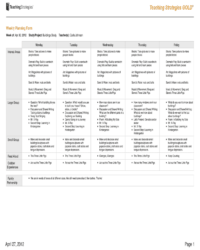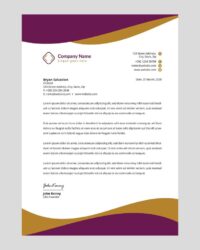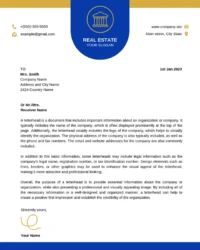Have you ever found yourself searching for that perfect structure to really make your lessons pop and stick with your students? It’s a common quest for educators, and honestly, finding a framework that consistently works can feel like striking gold. The good news is, there’s a highly effective approach known as the Fundamental 5, and it’s a game-changer for classroom engagement and learning retention. It provides a clear, actionable path to create dynamic lessons that truly resonate.
This isn’t just another theory; it’s a practical, research-backed methodology designed to elevate your teaching. By focusing on specific, high-leverage teaching strategies, the Fundamental 5 helps you maximize instructional time and ensure that every student has the opportunity to deeply grasp the material. It simplifies lesson planning while enhancing its impact, making your daily classroom experience smoother and more rewarding for everyone involved.
Diving Deep into the Essence of the Fundamental 5 Approach
The Fundamental 5 isn’t just a catchy name; it represents five core instructional practices that, when consistently applied, significantly boost student learning and engagement. Think of it as a toolkit that empowers you to deliver powerful lessons day in and day out. It’s about being intentional with every minute of your instruction, ensuring that key learning moments are maximized and that students are active participants in their educational journey, not just passive listeners.
This framework encourages teachers to build lessons around these critical components, moving away from fragmented teaching towards a more cohesive and impactful delivery. It provides a clear roadmap, especially beneficial for new teachers seeking effective routines, but equally valuable for seasoned educators looking to refine their craft. The beauty of the Fundamental 5 lies in its adaptability; it can be applied across all grade levels and subject areas, making it a universal tool for educational excellence.
The Five Pillars That Hold Up Learning
At the heart of the Fundamental 5 are five distinct, yet interconnected, practices. Understanding each one individually is key to unlocking their collective power in your classroom. They are designed to create a consistent, high-quality learning environment where students know what to expect and how to succeed.
- Framing the Lesson: This is where you clearly communicate the lesson’s objective and its relevance to students. It sets the stage, answers the "why are we learning this?" question, and helps students connect new information to their existing knowledge base.
- The Power Zone: This refers to the teacher’s physical movement within the classroom, intentionally positioning themselves near students to monitor progress, offer support, and address off-task behavior. It’s about active supervision and presence.
- WICOR Strategies: WICOR stands for Writing, Inquiry, Collaboration, Organization, and Reading. These are academic strategies that encourage higher-order thinking and active processing of information. Incorporating these ensures students are not just receiving, but actively constructing knowledge.
- Frequent, Small-Group Purposeful Talk (FSGPT): This component emphasizes giving students regular opportunities to discuss content with their peers in small groups. It promotes deeper understanding, clarifies misconceptions, and builds communication skills.
- Recognizing and Reinforcing: This is about providing timely and specific feedback, whether it’s praise for effort, correction for mistakes, or recognition of progress. It motivates students and guides their learning journey effectively.
Beyond the Basics: Making Each Component Sing
While each of these five components is powerful on its own, their true strength emerges when they are thoughtfully integrated into a coherent lesson. Imagine how much more effective a lesson becomes when students clearly understand the goal (Framing), are actively engaged in discussions (FSGPT) while the teacher circulates to provide targeted support (Power Zone), all while using strategies that demand critical thinking (WICOR), and receiving immediate, meaningful feedback (Recognizing and Reinforcing). It creates a synergistic learning environment that is dynamic and highly productive. By embracing these pillars, you lay a solid foundation for every lesson, transforming how your students learn and how you teach.
Crafting Your Own Fundamental 5 Lesson Plan Template
Now that you have a firm grasp of the core concepts, let’s talk about putting it into practice. Creating your own fundamental 5 lesson plan template isn’t about rigid adherence to a script; it’s about having a flexible framework that guides your planning, ensuring you consistently incorporate these high-impact strategies. Think of it as your personal blueprint for success, customizable to fit your unique teaching style, subject matter, and student needs. It streamlines the planning process, allowing you to focus more on delivery and less on reinventing the wheel each time.
The process of building your template encourages you to be deliberate about your instructional choices. Instead of simply listing activities, you’ll be prompted to consider how each activity aligns with one or more of the Fundamental 5 practices. This intentionality is what elevates good teaching to great teaching. It empowers you to anticipate student needs, plan for engagement, and ensure that every segment of your lesson contributes meaningfully to the learning objectives.
Here are some guiding steps to help you structure your template:
- Start with Objectives: Clearly define what students should know or be able to do by the end of the lesson. This is your foundation.
- Integrate Framing: Plan specific phrases or activities for how you will introduce the lesson’s purpose and relevance.
- Map Out Movement (Power Zone): Consider where you’ll position yourself during different parts of the lesson to maximize monitoring and support.
- Strategize WICOR Integration: Brainstorm specific WICOR activities (e.g., a quick write, a collaborative problem-solving task, a guided reading exercise).
- Plan for Talk (FSGPT): Identify moments for students to engage in purposeful discussions, outlining the specific prompts or questions they will discuss.
- Design Feedback Loops (Recognizing and Reinforcing): Think about how and when you’ll provide feedback, both formal and informal, throughout the lesson.
Remember, this template is a living document. As you implement it, you’ll gain insights into what works best for your students and your context. Don’t be afraid to tweak and refine it. The goal is to develop a template that feels natural to you, one that seamlessly integrates these powerful strategies into your daily teaching, ultimately fostering a more effective and engaging learning environment for all.
Embracing the principles of the Fundamental 5 can truly transform your classroom. By consistently applying these five high-leverage practices, you’re not just delivering lessons; you’re cultivating a robust learning environment where students are active participants, critical thinkers, and confident learners. It’s about building a teaching practice that is both efficient and profoundly impactful.
The lasting effect of this approach extends far beyond immediate lesson delivery. It helps students develop essential academic habits and metacognitive skills that will serve them well throughout their educational journey and beyond. By providing a clear, consistent structure, you empower your students to take ownership of their learning, creating a dynamic and successful educational experience for everyone involved.


